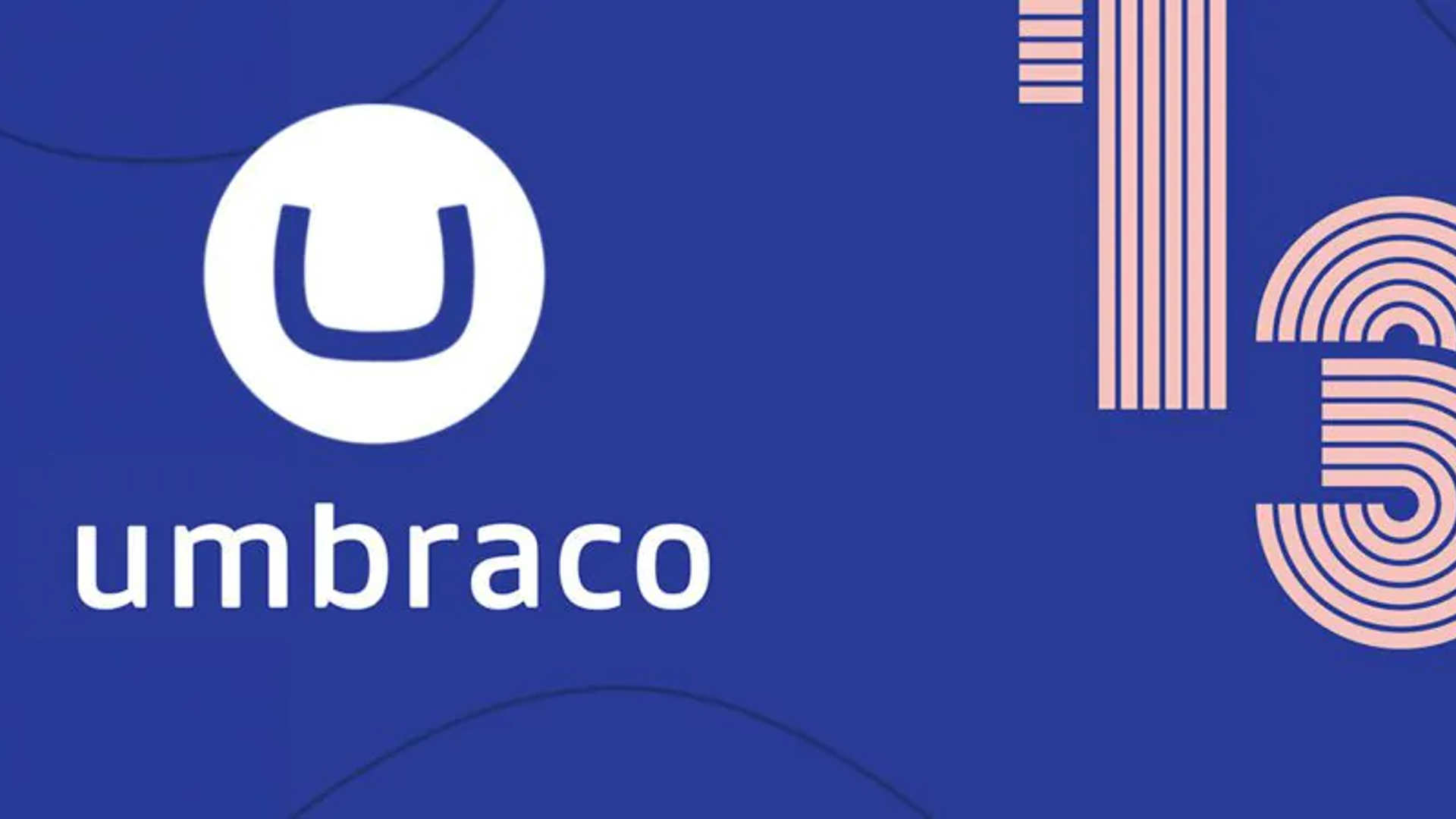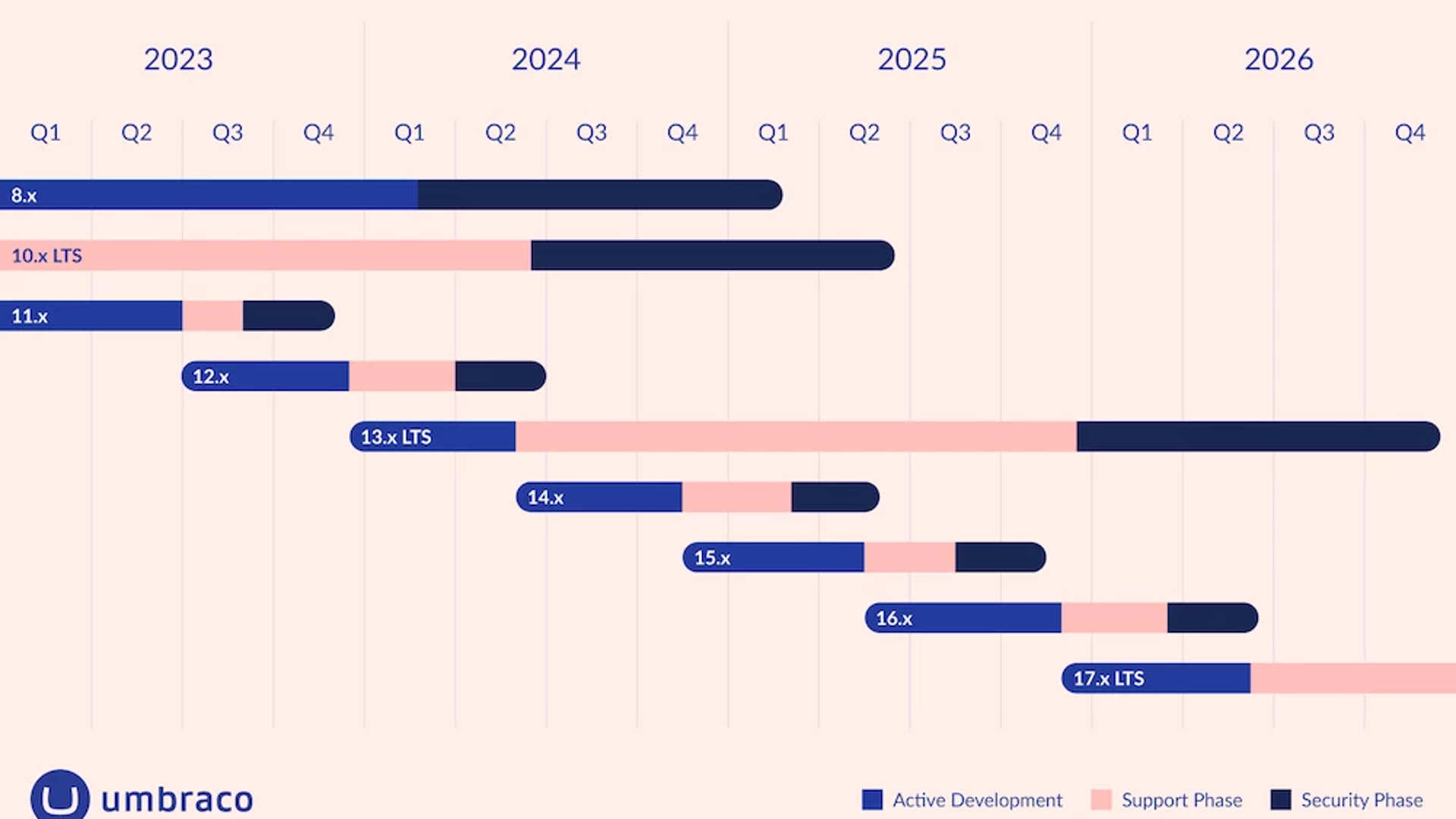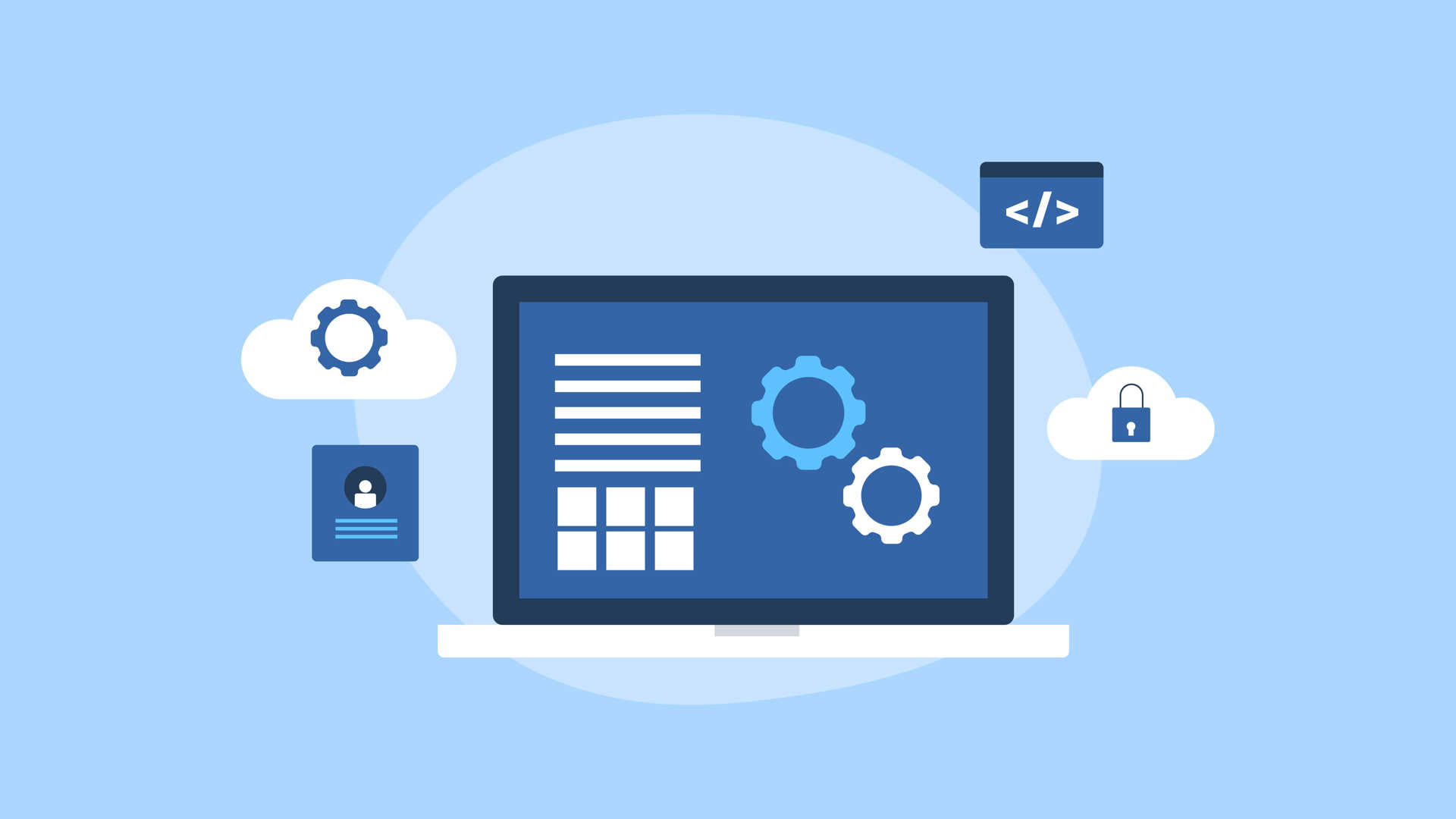Change in the world of software is inevitable.
New technologies, improvements, updates. Nothing stays still for long. Umbraco is no exception. This blog explores the real-world options open to businesses that are running end of life Umbraco software or have this looming.
As a long-established Umbraco Gold Partner, we’re always up to date with the latest Umbraco changes. Right now, at the time of writing this blog, we are looking forward to the launch of Umbraco 14.
If you are reading this and your website is running Umbraco 7, then you’ll probably be thinking two things; how has it got to Umbraco 14 already and do I really need to make the change from the version of Umbraco I’m currently running, as it seems to be working fine.
This blog aims to give you a balanced view about the advantages and disadvantages of upgrading. We help you understand the risks associated with running end of life software. What we can say from the outset is that it is always preferential to be up to date.

Why Umbraco?
If you’re looking to upgrade from older versions of Umbraco to the latest versions, then you probably should stop and ask yourself if Umbraco is still a good choice. If you’re already familiar with Umbraco CMS then you’ll know it is a great open-source solution. Our developers love working with it because it is flexible and offers them lots of freedom, and clients also like the simplicity and power that we can provide them. Umbraco continue to invest heavily, and every release brings with it improvements. Umbraco CMS comes up top in many industry reviews and the software supports some huge brands. This is a seriously good CMS. There are other CMS’s out there, but none offer the same without hefty license fees attached.
Why all the change?
Sometimes change is forced on a software provider due to wider market changes. Microsoft’s move away from .NET framework to .NET core was a massive change for the industry a few years ago. It’s a big change for Microsoft, one that you could maybe expect once every decade. So, when Microsoft confirmed this change, it meant everyone supplying software built on the .NET framework had to rebuild to fit this new technology.
The good news is that Microsoft’s .NET update means faster processing times and improved reliability. For Umbraco, it meant a lot of hard work to redevelop their CMS product to work with this new foundation. Microsoft were not going to support the older tech standard, so Umbraco had no choice but to make big changes.
The bad news for many clients was that there was no simple upgrade path from Umbraco 7 or 8 to the new versions.

Version confusion
Umbraco have improved their communication and transparency with regards to their roadmap, so we can confidently plan ahead and keep our clients informed. We know the planned changes for Umbraco until 2028 and beyond pretty clearly.
New minor versions of Umbraco will typically get released every few weeks, with more major releases every 6 months or so. This does not mean that every time a version is released a client should automatically update, but we make sure the client is aware of the benefits of upgrading and give them the options.
Our focus is more on the long-term supported versions of Umbraco. These are released less frequently and typically carry all that we would recommend a client adopts. This means we look to help a client plan in a simple upgrade every 12 months, sometimes every 6 months if needed.
Right now, at the time of writing this, we are working with version 13 of Umbraco. This version was released recently and is one that we know we will be working with for some time, as it is not due to reach end of life until 2026.
The previous versions are in different states, which I summarise here.
- Version 7 – this reached end of life at the end of 2023 and is no longer supported by Umbraco, unless you have an extended paid support package which offers support for any significant security issues until the start of 2025.
- Version 8 – this reaches end of life in February 2025, at which point it will no longer be supported by Umbraco. Not confirmed at the time of writing, but it can be expected that Umbraco will provide extended paid support for possibly 2 years.
- Version 9 – this version reached end of life at the end of 2022 and is no longer supported.
- Version 10 – this version reaches end of life in June 2025.
- Version 11 – this version reached end of life at the end of 2023.
- Version 12 – this version reaches end of life in June 2024.
- Version 13 – this version has only just launched and won’t reach end of life until later in 2026.
The cost of upgrading
Upgrade must mean cost? That’s true, but most upgrades are hours of work rather than weeks of complexity and we typically cover them off through maintenance retainer time. The benefits of keeping up to date are presented to our clients, identifying if there is a real need or not to upgrade. In normal times, upgrading is not a big change.

The big change
The first Microsoft .NET Core version of Umbraco (v9) was released in late 2021. This heralded the end of life for Umbraco 7 and Umbraco 8, both of which were developed on the former (and now unsupported by Microsoft) .NET Framework technology.
This created real problems for those running websites on Umbraco 7 and also Umbraco 8. A move up to Umbraco 9 or later versions requires the client to fund a rebuild of their website. There is no technical way to do a normal upgrade path.
Of course, this was greeted by many clients as a problem, suddenly facing the prospect of rebuilding a website that they may only have invested in over recent years.

The options upgrading from Umbraco 7 or Umbraco 8
Some clients have used the situation to simply replatform. This involves copying over their existing designs, layouts and content, and then rebuilding on the latest Umbraco. This helps to reduce cost and minimise the impact on their own team, but it does miss out on the opportunity to seek improvements and enhancements whilst rebuilding.
Some clients have done minimal design changes whilst the rebuild takes place.
Other clients have taken the opportunity to rethink what they are doing. We’ve helped many to find stability and security in the short term whilst we help them to assess their future needs.
Finally, a few clients have decided not to change, for now.
Can you stay on Umbraco 7 or Umbraco 8 beyond end of Life?
Yes, you can. This all depends on your attitude to risk. End-of-life is the end of support for a software version, which is serious. If someone finds a way of breaking into a piece of software then it is normally picked up quickly and a patch is released. We’ve helped clients by auditing their set up, identifying risks and then putting key changes to infrastructure and working practices in place.
One key consideration is PCI compliance. If you are taking payments on your website, then you are unlikely to be PCI compliant if you are running end-of-life software. This may force you to upgrade in order to be using supported software.
We have also been aware of some clients that have had to upgrade from end-of-life software due to their business insurance being potentially invalid. Clients that have specific cover for hacking and data breaches are particularly at risk of invalidating their insurance by running end of life software.

Is upgrading a good thing?
The team at Umbraco are making countless changes all the time. Some are enhancements, some are fixes to bugs and others are addressing security issues. If you look at the amount of change that happened since the launch of Umbraco 7 to Umbraco 12, there are over 1,000 new features and over 5,000 issues that have been managed. Not upgrading means you’ll be missing out on all the issues that have been addressed and the new features.
Is there life after end of life?
No client wants to be forced into change, and in normal times upgrading to the latest version of most software is typically not much to get too concerned about in terms of time and money.
The move by Microsoft that I’ve described did create some commotion in the industry. There is no doubt the change of technology was a good thing for the long term, but the short-term pain is still being felt by many.

No client should ideally be running end-of-life anything. The risks are high, and whilst mitigation approaches can reduce risk, the reality is that there may be other consequences that a client is possibly unaware of. We will always support a client, informing them of options but respecting their decision.
If you’re on Umbraco 7 or 8, if it makes you feel any better, I heard of an agency still supporting a client on Umbraco 4, which is quite something.


